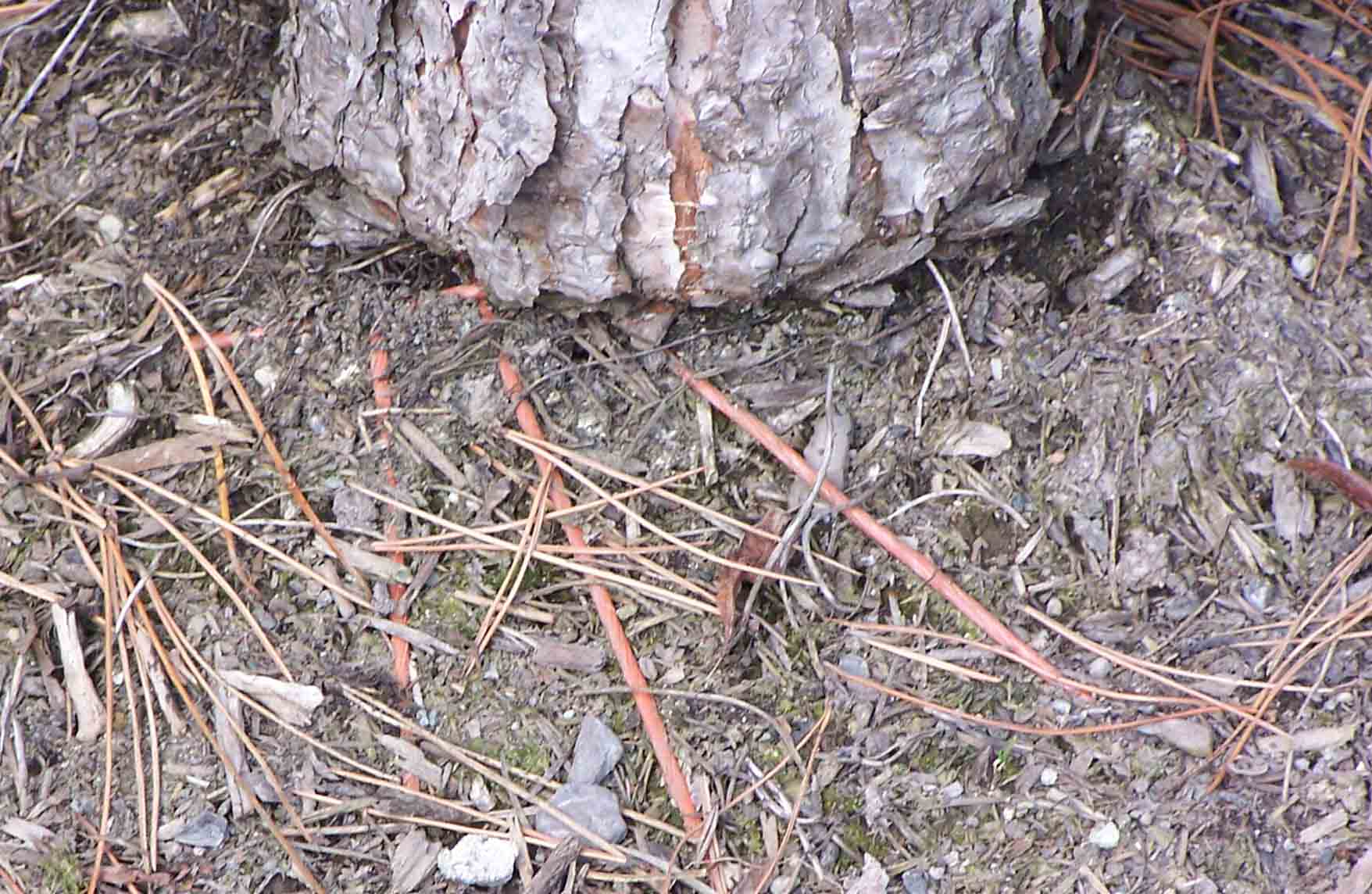Great discussion over the weekend, with some very astute observations. If you looked at the brown needles under the tree in Friday’s picture, you may have noticed that some of them weren’t needles:

Not only was this tree planted too deeply, as several of you pointed out, but the burlap and twine were left intact. It appears the nylon twine has already started to girdle the trunk, based on the trunk swelling just above where the twine is wrapped.
I’ve ranted about this practice already, so I’ll just sigh and move on to the first question – what directly caused the needle drop from the lower part of the tree? It’s a young tree facing west so the lower half gets plenty of sunlight. And though needle drop is normal with all conifers, the upper portion of the tree does not show the same drop with its interior needles. My guess is that ethylene gas is responsible.
Plant roots under stress often release ethylene, a natural plant growth regulator more commonly associated with fruit ripening. It also induces leaf drop, so as it percolates out of the soil it affects the lower leaves, but dissipates before it reaches leaves higher in the crown. It’s a common phenomenon with over-watered house plants.
Thanks to all of you who participated in the diagnosis discussion – this is more fun than my 20 years of college teaching!
This is great fun! And I’m learning a lot.
This is great fun! We’re going to have a blizzard tomorrow, so how about 2 a day?
Yet another great post — thanks! Is the ethylene a way for a stressed plant to balance root and crown growth?
Thanks, Marie, Jim and Deb for your enthusiasm! (Jim, you guys are getting HAMMERED today. Stay warm!) Deb, you raise an interesting question. Both abscisic acid and ethylene are produced by plants as inhibitory growth regulators, and both cause leaf drop. It would be advantageous for a plant with stressed roots to abscise its leaves to reduce water and nutrient requirements by the crown (thus reducing the need for fully functional roots). That’s also the reason that one shouldn’t crown prune when transplanting trees and shrubs – the pruning encourages production of stimulatory growth regulators. This means more crown growth for roots to have to support – at a time when they need the resources for growth and establishment.